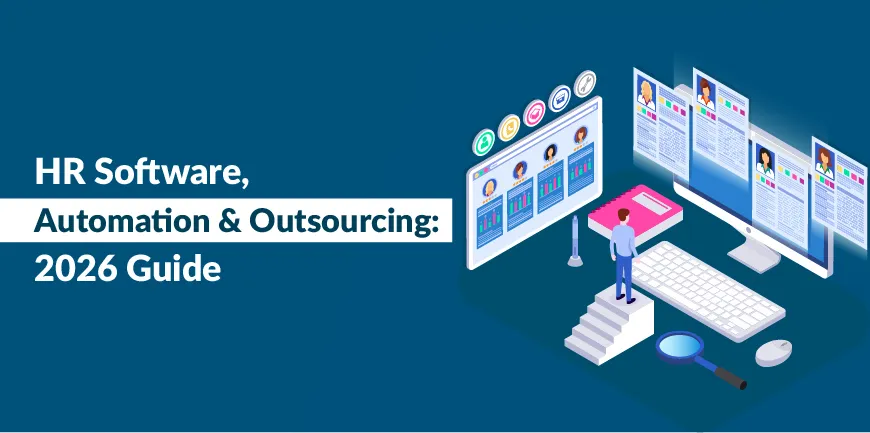
What Is Change Management? Definition, Benefits, And Principles
27/10/2025
What Is an Outsourced Chief Compliance Officer (CCO)?
27/10/2025- What Is an Appraisal Letter?
- What are the Objectives of an Appraisal Letter?
- What are the Key Components of an Appraisal Letter?
- What are the Kinds of Appraisal Letters?
- How Is an Appraisal Letter Developed?
- What are the Benefits of Appraisal Letters for Employees and Employers?
- What is the Difference Between an Appraisal Letter and an Appreciation Letter?
- What are the Common errors to avoid in Appraisal Letters?
- What are the future trends of Appraisal Letters?
- Key Takeaways
- Frequently Asked Questions
“We all need people who will give us feedback. That’s how we improve.”, Bill Gates. There is a time in our lives when we stand confused and nervous in terms of our career. The toil and hard work that make us what we are must be acknowledged and celebrated. How does that happen? To give us the carefully worded feedback enters appraisals. It is a defining moment in everybody’s life when their work is reflected on what might look like a piece of paper, but is an asset.
Let us take you through the details of appraisal letters, their meaning, advantages, trends, and objectives.
What Is an Appraisal Letter?
A performance appraisal letter is a document entailing a thorough assessment of an employee’s job performance, contributions, and accomplishments over a period. It summarizes the strengths and weaknesses of an employee, identifying areas of improvement and providing valuable suggestions as to where they might have to put in more effort to perform better.
What are the Objectives of an Appraisal Letter?
The requirement of an appraisal letter for an employee can vary from professional to professional. For some, it can make or break their careers, and for some, it might provide an incentive to progress and perform with confidence. Which category do you fall in? To get a clearer picture, let us delve into some of the significant objectives of an appraisal letter:
1. Performance Tracking
The primary goal of an appraisal letter is to evaluate the performance of employees for a specific period, outlining their achievements, progress, and the areas that require improvement. Tracking the performance is effective if the method is structured and systematic, making it easy for the employees to comprehend their performances.
2. Uplift Employee Morale
A well-written appraisal letter is an incentive for employees to contribute to the company’s growth with vigour, leading it to a successful pathway. The individuals feel happy and satisfied, making them feel connected to the organization and looking at a long-term engagement with them.
3. Setting Employee Goals
Another significant objective of appraisals is that they structure clear future goals for an employee in the letter. Employees know exactly what they are expected to progress in their careers and in the company. The goals are essentially aligned with those of the organization. It is necessary to make employees understand how goals are designed, providing them with a sense of familiarity.
4. Employee Development and Feedback
The process of employee development is facilitated with a continuous flow of feedback, where employees are constantly receiving inputs on their performances and how they can enhance their performances. They feel confident with a clear roadmap formulated for them for professional and personal upliftment.
5. Salary Review and Recognition Update
An employee’s compensation is a substantial element that is impacted by performance appraisals, directly affecting their career progress. The changes are communicated through the letter, highlighting promotions, adjustments, bonuses, etc. The communication must be transparent, acknowledging the contributions of an employee. If there is a change in role, like a promotion, then the designation, reporting structure, etc, are mentioned in detail.
What are the Key Components of an Appraisal Letter?
To design an impressive appraisal letter, there is a format that one needs to follow. Let’s walk you through the significant components:
1. Introduction
It entails the day the letter is provided to the employee, the employee’s details, location of the company. The letter must begin by formally greeting individuals. It is essentially a statement written to describe the purpose of the letter.
2. Performance Summary
This is a summary of the overall performance of employees that includes their contributions and vital achievements. This part also outlines the positives and strengths of an employee so that they can be further utilized at work.
3. Areas of Improvement
This is a delicate part where employers identify the weaknesses of employees in terms of their work and highlight them by providing valuable feedback along with suggestions and ideas for their development by recommending training programs catering to the weak areas.
4. Rating and Review
This is an important part that mentions salary revisions, salary increase, bonuses, etc. Some firms have a rating system, and the rating given to an employee during the period is mentioned.
5. Objectives and Expectations
This part has clear goals written down for an employee to meet in the next appraisal cycle. It is also mentioned how the employee’s goal caters to the company’s objectives.
Conclusion
The final part is the conclusion, where the closing statements are written to thank the employees for their contribution, encouraging them to continue performing well.
What are the Kinds of Appraisal Letters?
The types of letters emphasize bonuses, incentives, etc, associated with performance. Let us find out what the types are:
- Performance-Based Appraisal Letter
- Salary Increment Appraisal Letter
- Promotion Letter
- Appreciation or Recognition Letter
- Neutral Appraisal Letter
- Self-Appraisal letter
- Bonus or Incentive Letter
How Is an Appraisal Letter Developed?
Appraisal letters are meticulously formulated to provide clarity to employees, guiding them to achieve their set targets and growth in an organization. Here are the steps:
- The first step is to collect relevant employee information that includes performance data, employee self-reviews, KRA’s etc.
- The next step is to use a standard format that entails the employee’s details.
- After structuring it properly, it is time to positively introduce the individual, mentioning their contributions.
- Then comes the summary of the employee’s performance, outlining the areas requiring improvement and feedback.
- It’s then time to analyse outcomes that include salary increase, promotion, etc., and then mention the objectives and goals they need to attain. Finally, the concluding part with a closing remark.
What are the Benefits of Appraisal Letters for Employees and Employers?
Appraisal letters are propellers of motivation and growth for both employers and employees. Let us find out how:
For Employees:
- Official Appreciation
- Career Development
- Encouragement and Confidence
- Comprehensive Feedback
- Clear Expectations
For Employers:
- Official Performance Record
- Merit-Based Judgment
- Training and Improvement
- Future Target Planning
- Clear Communication and Transparency
What is the Difference Between an Appraisal Letter and an Appreciation Letter?
| Feature | Appraisal Letter | Appreciation Letter |
| Purpose | Formally assesses performance that includes strengths and weaknesses | Acknowledges and praises specific, exceptional achievements. |
| Content | Focuses on performance, feedback, improvement in required areas, often including salary adjustments or promotions. | Focuses only on specific positive achievements and contributions. |
| Timing | It is a part of an official review cycle and is issued annually, semi-annually, or quarterly. | Can be issued at any time in response to a specific event or accomplishment. |
| Recipient | Provided to all employees in the company. | It is a reward for employees who have excelled in performance. |
| Sender | Usually comes from the HR department or management. | It can come from any superior, like a direct manager. |
| Tone | Formal and comprehensive. | Informal and personalized |
| Impact on Compensation/Role | It can directly influence salary, bonuses, and promotions. | It does not include any information on salary or role changes. |
What are the Common errors to avoid in Appraisal Letters?
An appraisal letter is the backbone of an employee’s development and career trajectory; a little mistake in the reviewing mechanism can jeopardize the staff management procedure. According to a survey, 90% of performance reviews are insufficient. Let us check out some of the common errors that can be avoided:
1. Biased Approach
Employers sometimes are prejudiced while evaluating an employee’s performance and can provide feedback on that basis, threatening the appraisal of an individual, hampering their career development process.
2. Typecasting
This approach can negatively impact employees, as during the review process, reports can be derived from preconceived notions, clouding the judgment of appraisers.
3. Halo Impact
This is essentially generalizing a particular employee trait, linking it to all the other aspects of reviewing. This can be dealt with by formulating accurate evaluation methods.
4. Distribution Errors
This is a common mistake where an appraiser might try fitting employees into categories they do not belong to, regardless of their performance. There is a contradiction, and the outcome is vague.
5. Similarity Error
Appraisers sometimes favour certain employees more than others as they feel a connection. However, this factor becomes a problem during appraisals.
What are the future trends of Appraisal Letters?
The future trends of appraisal letters in 2025 and beyond are here and ready to transform the appraisal systems in the upcoming evolving talent management market. Let us dive deep into the future and find out what the trends are:
1. AI-Powered Letters
The advent of AI has revolutionized the recruitment sector, and today, employers and recruiters are utilizing AI-backed tools to personalize appraisal letters. These letters showcase the actual individual achievements, growth parameters. The evaluation is useful, direct, and forward-looking.
Use case- AI tools (like Leena AI or ChatGPT integrations) assist managers in drafting personalized performance narratives for appraisal letters based on metrics and feedback.
2. Continuous Feedback Mechanism
Traditionally, performance assessment was a yearly affair, but now, with changing times, the conventional system has been taken over by constant feedback structures. Appraisal letters are now integrated with the feedback systems, containing real-time tracking tools and incorporating vital info along with regular check-ins.
Use case- Microsoft replaced its annual ratings with more frequent “check-ins” (called “Connects”) and ongoing informal feedback. Their continuous feedback mechanism allows managers and employees to chat about progress, goals, and development more regularly rather than waiting for a year-end appraisal.
3. Significance of EQ and Soft Skills
With hybrid and remote work becoming the new norm, appraisal letters are highly focused on how important soft skills and emotional intelligence are for communication and collaboration. These factors are now an intrinsic part of performance review.
4. Integration of Gamification Components
Some companies are trying to accelerate engagement by incorporating gamification elements where performances and accomplishments are being recognized with rewards, badges, etc.
Key Takeaways
- Motivational and Evaluative
- Serve Planned Objectives
- Formatted Structure and Tone
- Common Drawbacks like Bias, Inconsistency
- Evolve with Modern Tech
Frequently Asked Questions
1. What is the frequency of issuing appraisal letters?
Appraisal letters are issued annually, and some companies also review performances biannually.
2. Are appraisal letters legally binding?
Appraisal letters are not legally binding but might possess legal significance based on how they are used.
3. Can appraisal letters affect salary or promotions?
Yes, appraisal letters do affect salary or promotions. It is the official HR medium through which information regarding salaries or promotions is communicated.
4. How should employees respond to appraisal letters?
The response to good appraisal letters should be gratitude and appreciation, thanking the employer for feedback and recognition.
5. Who issues appraisal letters?
The HR of a company issues an appraisal letter.
6. Are an appraisal letter and an increment letter the same?
The appraisal letter focuses on assessing the performance of an employee, providing feedback, while an increment letter solely focuses on salary adjustments, pay hikes, bonuses, etc.
7. What details are included in an appraisal letter?
Appraisal letters entail a thorough evaluation of employee performance, communicating the outcomes.

Rajkumar Shanmugam
Rajkumar Shanmugam is the Head of HR at ALP Consulting, bringing over 19 years of comprehensive HR leadership experience across India and international markets. His expertise spans talent acquisition, employee relations, performance management, compliance, and HR transformation. Rajkumar has a proven track record of driving people-centric initiatives, enhancing workplace culture, and aligning HR strategy with business goals. With extensive experience in US staffing operations and global mobility, he continues to lead organizational excellence through innovation and employee engagement.




